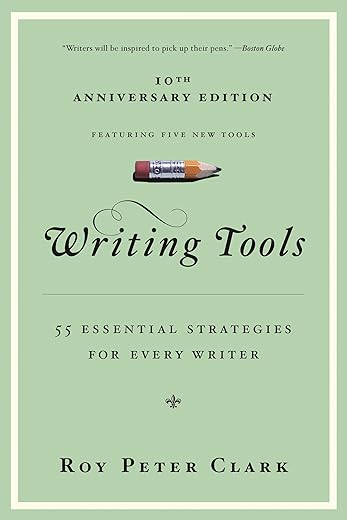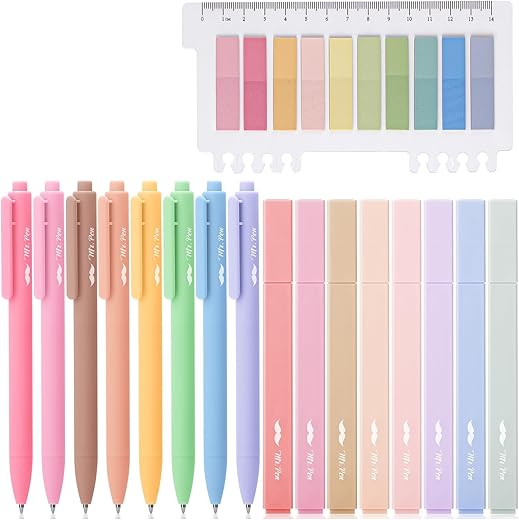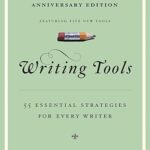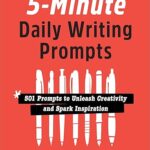Discover the ultimate guide that could reshape your writing journey!
Are you struggling to find inspiration or improve your writing skills? Many writers face the daunting challenge of overcoming writer’s block or honing their craft, leaving them feeling frustrated and uninspired.
Enter Writing Tools: 55 Essential Strategies for Every Writer! This guide offers invaluable insights and practical strategies designed for writers at any level, helping you unlock your potential and ignite your creativity.
Essential Writing Strategies for All Writers
This book offers invaluable insights and practical strategies for writers at any stage. Its engaging style and structured format make it a go-to guide for improving writing skills and finding inspiration.
Writing Tools: 55 Essential Strategies for Every Writer
Overview
Writing Tools: 55 Essential Strategies for Every Writer is a celebrated guide by Roy Peter Clark, designed to help writers of all levels enhance their craft. Celebrating its 10th anniversary, this updated edition includes five new tools that reflect contemporary writing practices. Clark brings decades of experience in journalism and teaching to this classic book, making it a valuable resource for everyone—from high school students to seasoned novelists.
Structure of the Book
The book is organized into four main sections:
- Nuts and Bolts
- Special Effects
- Blueprints for Stories
- Useful Habits
Each section is filled with short, engaging essays that present each writing tool in a clear and concise manner. This structure not only makes the book easy to navigate but also allows readers to focus on specific aspects of writing that they wish to improve.
Nuts and Bolts
In the first section, Clark covers the fundamental aspects of writing—what he calls the “Nuts and Bolts” of writing. This section includes tools that focus on:
Clark effectively communicates that these are not rigid rules but flexible strategies to enhance writing. This mindset encourages writers to experiment and find their unique voice.
Special Effects
The second section dives into techniques that add flair and originality to writing. Here, readers will learn about:
Blueprints for Stories
In the third section, Clark emphasizes the importance of structure in storytelling. Key tools include:
Useful Habits
The final section highlights long-term strategies for developing a writing habit. Clark discusses:
Practical Application
Each chapter concludes with practice exercises that reinforce the tools discussed. This hands-on approach helps writers apply the strategies immediately, making the book not just a theoretical resource but a practical guide for everyday writing.
Who Can Benefit
Whether you’re a student, a professional writer, or someone who simply enjoys writing as a hobby, Writing Tools caters to a wide audience. It demystifies the writing process and provides clear, actionable advice that can be applied to various forms of writing, including:
Conclusion
In conclusion, Writing Tools: 55 Essential Strategies for Every Writer is more than just a book; it’s a comprehensive toolkit for anyone looking to enhance their writing. With its engaging style, practical examples, and structured approach, it remains a vital resource in the world of writing. Whether you’re just starting or seeking to refine your skills, this book offers timeless advice that will resonate across generations.
Key Takeaways
Writing Tools is not just a book; it’s a pathway to becoming a more effective and confident writer. With the right tools at your disposal, every writer can find their voice and express their ideas with clarity and creativity.

FAQs
The book focuses on providing practical strategies and tools to help writers improve their writing skills across various genres.
Specifically, it distills decades of writing experience into actionable advice. The strategies cover essential elements such as grammar, style, and narrative techniques. By emphasizing clarity and creativity, the book aims to enhance the writer’s ability to engage readers effectively.
Yes, the book is designed for writers of all levels, including beginners, and presents concepts in an accessible manner.
It introduces fundamental writing principles without assuming prior knowledge, making it easy for novices to grasp essential skills. Additionally, the explanations are straightforward, often supplemented with examples that illustrate key points, which further aids understanding.
The content is organized into four sections: Nuts and Bolts, Special Effects, Blueprints for Stories, and Useful Habits, each addressing different aspects of writing.
While the tools are broadly applicable, some strategies may be more beneficial for fiction writers than for those focused on technical or academic writing.
For instance, narrative techniques might resonate more with creative writers, while analytical tools may better serve researchers. However, many principles, such as clarity and audience awareness, transcend genre and can enhance any writing style.
Yes, each chapter concludes with practical exercises that allow readers to apply the strategies discussed.
These exercises encourage writers to experiment with the techniques presented and reinforce learning. They often include prompts for creative writing, rewriting tasks, and reflection questions, helping to solidify the concepts in a hands-on manner.
This book stands out due to its comprehensive approach and the author’s extensive experience.
Absolutely, experienced writers can gain fresh insights and revisit foundational strategies that they may overlook.








I don’t know, sounds a bit too much like all the other writing guides out there. What makes this one different? 😕
Great question, Tommy! This book focuses on practical strategies that can be applied right away, rather than just theory.
I felt the same way at first, but the structured format really sets it apart. It’s organized in a way that’s easy to follow.
I must say, I appreciate the clear layout of the chapters. Makes it easy to find what I’m looking for!
Totally agree! It’s like they thought of everything!
Glad you find the layout helpful, Paul! It’s designed to be user-friendly.
Honestly, I was skeptical at first. But after reading a few chapters, I can see how it might help. The expert rating is pretty solid too!
Just finished the one on developing your voice! It’s so enlightening!
Glad you’re finding it interesting, Kathy! What chapter are you on?
The book cover is also super attractive! I judge a book by its cover, and this one nailed it! 😍
We love a good cover too, Nina! It definitely attracts attention.
For sure! It makes me want to carry it around just to show it off!
I bought it last month and I’m still getting through it. It’s good, but I wish there were more interactive elements. Like writing exercises!
I agree! I’d love to see some prompts or challenges included!
That’s a great suggestion, Clara! Interactive elements can really enhance learning.
I bought this book last week and I’m halfway through. Some tips are really intuitive, but others… not so much. 🤔
That’s the beauty of it! Every writer is different, so not all strategies will resonate with everyone.
The one on brainstorming techniques. I just prefer to free-write instead!
What’s one that didn’t work for you? I’m curious!
I appreciate that it’s only $11.99. It’s not a huge investment if it ends up helping!
Definitely! It’s a great price for the value it offers.
Totally agree! Plus, it’s cheaper than my last writing workshop!
I’d love to see a follow-up book that goes deeper into each strategy. This one whetted my appetite!
That’s an interesting idea, Gary! A deeper dive could be beneficial.
I’d be first in line for that! Some strategies felt like they could use more examples.
I loved the tone of the writing! It made the strategies feel relatable and fun! Can’t wait to apply them!
I felt the same way! It makes learning feel less like a chore.
So glad you enjoyed the tone, Megan! It definitely adds to the reading experience.
55 strategies? That’s a lot to digest! Do you think it’s too overwhelming for beginners?
I think it’s more about picking what works for you. Not all 55 have to be used at once!
Not at all! The book is designed to be user-friendly, with each strategy easy to understand.
The author seems to really know their stuff. An 8.5 out of 10 is impressive! Anyone know if they have other books?
I think they have a book specifically on character development. I’m interested in that one too!
Yes, the author has written several other guides. You can usually find them on Amazon!
Can someone summarize the key points for me? I don’t have time to read the whole thing right now. 😅
Sure! The book covers various strategies like setting goals, finding your voice, and overcoming writer’s block.
Just focus on the ones that resonate with you at the moment. You can always come back!
I just picked up this book and I have to say, it’s a game changer! The strategies are super practical and easy to implement. I’ve already seen improvements in my writing. Highly recommend it to anyone looking to up their game! 📚✨
Thanks for the positive feedback, Jessica! We’re glad to hear it’s helping you improve!
Definitely the one about setting daily writing goals! It keeps me on track!
Do you have a favorite strategy so far?